Introduction to fast growing leafy vegetables in pots: Edible plant leaves also called leafy greens or dark greens, are green leafy vegetables. There are leafy greens that are eaten raw and leafy greens that need to be cooked. Their green color and edible leaves usually distinguish vegetables of this type.
Guide on top 19 fast growing leafy vegetables in pots, best way to grow leafy vegetables and tips
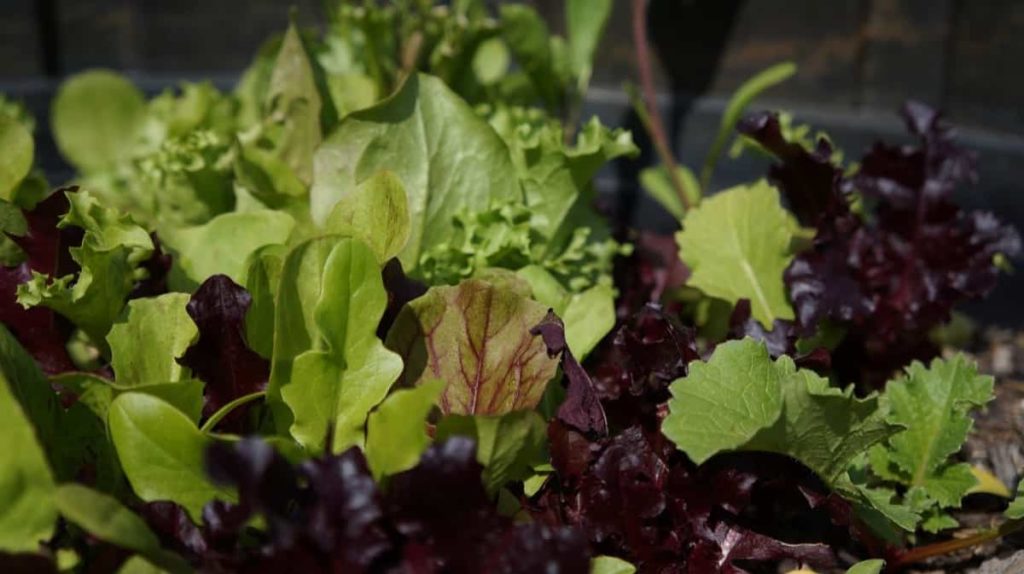
The best way to grow leafy vegetables in pots
As a source of oxygen and minerals, fiber, potassium, vitamins, and many other nutrients, plants are essential for human health and well-being. Also, every human body needs food to survive, and plants provide the most food. Planting Veggies in pots is fun, but when you want to grow Leafy Vegetables, you need to take extra care and effort.
Food produced organically
The health benefits of growing green vegetables at home are numerous. By doing so, the water is less likely to be polluted by impurities and harmful substances. The best way to promote its growth is to use as many natural ingredients as possible as its grower and nurturer. Organic food is free of artificial chemicals, fertilizers, and pesticides, which outside producers usually use. As a result, organic food promotes very healthy living and reduces many health risks.
Save money
One of the most significant benefits of growing leafy vegetables at home is cost-effectiveness. Almost half of the productional, operational, transport and additional costs charged by marketers outside your company are reduced to your own. With this method, you do not have to pay for the product or the service provided in serving the leafy vegetables. You can grow leafy vegetables at home and save all your money while still getting the greens you desire.
Enhances physical activity
You can boost productivity by growing your vegetables. Being physically active, having fun, and being productive engages you. Planting leafy vegetables requires arm and leg movement, which is excellent. Being active keeps your body healthy, your mind alert, and your energy levels up. Achieving maximum physical health requires producing something essential. It is a great way to promote physical activity and achieve positive results.
Creates a healthy environment
Human life depends on plants, providing oxygen and carbon dioxide. Therefore, having greenery in our homes leads to healthier air. In addition, they release moisture into the air through transpiration. As a result, we feel fresh and natural in our houses when we have them around. All of this contributes to a healthy home environment.
Reduces stress
Growing green leafy vegetables is an outstanding sport since it combines physical activity with a productive outcome. It can also serve as a mood booster and stress reliever. Keeping a garden at home will keep you engaged in taking care of and growing them. They are also a welcome change of pace from the daily routine of work or even household chores. One of the changes you can make to feel fresh and reduce your stress is to grow leafy vegetables for your home.
Consume a healthier diet
A healthy diet increases when green leafy vegetables are planted in the house. It is likely to be consumed more often when the greens are available in the house throughout the day. Furthermore, it is more convenient to pick the greens from your home and cook them rather than going to the market, bringing them home, purchasing, and then completing the rest of the process after.
Top fast-growing leafy vegetables in pots
Fenugreek
Methi leaves, another Indian subcontinent staple, are famous in Pakistan and India. Vitamin and antioxidant powerhouse fenugreek is also a potent libido booster. You can use the leaves in soups, “sabzi,” and various vegetable dishes.
In case you miss this: Top 17 Fast Growing Vegetables in the Backyard
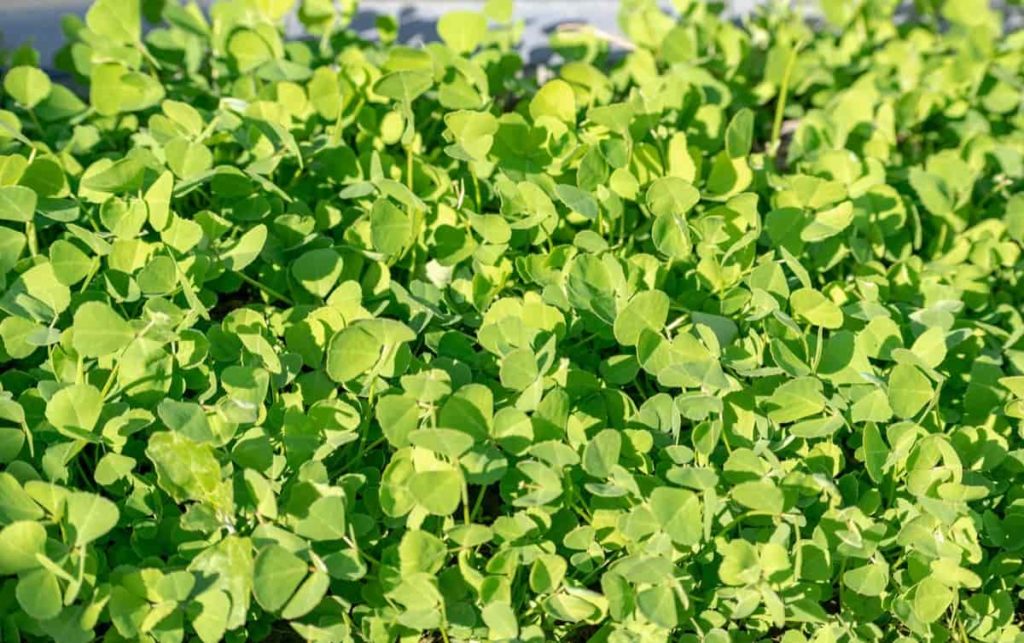
Malabar spinach
The mild taste of Malabar spinach will surely appeal to your palate if you enjoy the crispy texture of lettuce and the taste of spinach. Salad preparations, soups, and stir-fries can all benefit from this ingredient.
Mustard greens
It is one of the healthiest foods you can include on your salad platter, even if it isn’t appealing to kids. Suitable for any recipe that calls for a spicy mustard taste and low calories, this plant’s red or green foliage and succulent stems make it an excellent ingredient. It is surprising to learn that mustard greens are tolerant of heat and frost and can be grown both indoors and outdoors. You’ll need a shallow pot 6 to 8 inches deep. Use a regular potting mix that contains a lot of organic matter.
Spinach (Palak)
India consumes a lot of spinach, a popular green vegetable. Spinach aids in strengthening bones because it contains calcium. In addition, spinach contains fiber, protein, magnesium, minerals, and vitamins A and C. Diabetic patients should eat spinach regularly. Furthermore, it prevents cancer, asthma, and hypertension.
In case you miss this: Top 25 Fast Growing Vegetables in Pots
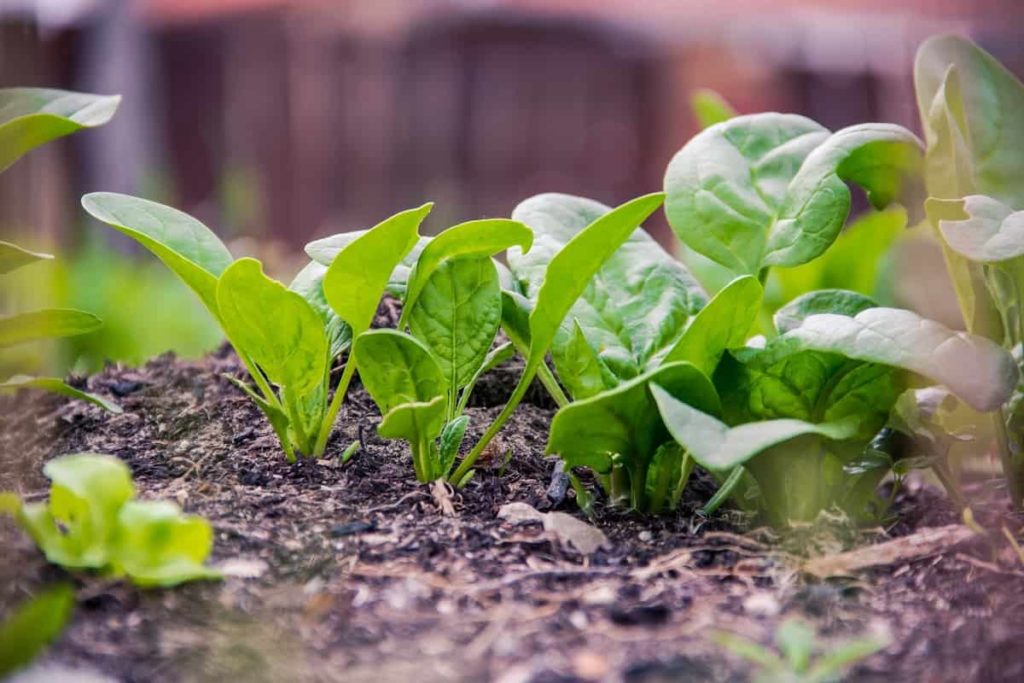
Cabbage (Gobi)
The leafy vegetable cabbage is found in most Indian dishes. Due to its popularity and high use offer excellent health benefits as it is packed with essential nutrients such as protein, fiber, folate, magnesium, potassium vitamins, & more. As a result, it helps improve digestion, reduce high blood pressure, and keep the heart-healthy. As a result, it helps improve digestion, lower blood pressure, and keep the heart healthy.
Celery
You can use this low-calorie vegetable in salads. Celery is a member of the same family as carrots, parsnips, and parsley, making it suitable for weight watchers. Celery is also an easy vegetable to grow, much like other greens. Ensure that the planter or bowl you choose has a depth of at least 8 inches. Water regularly and fertilize it with liquid fertilizer.
Swiss chard
The Swiss chard leaves have glossy green, vividly colored stalks that are stunning to look at and delicious to eat. Salads can be dressed with delicate baby leaves, while soups are seasoned with mature leaves; stir-fries can be enhanced with crispy stalks. Chard grows best in full sunlight, so place it in an area that receives at least 6-8 hours of sunlight every day, especially in climates with little sun.
Kale
Kale, the beloved leafy green of health buffs, adds color, texture, and nutrients to your meals. The dark-green leaves are fortified with vitamins, minerals, and dietary fiber. It is easy to grow on your balcony, patio, or indoors. For example, you can grow up to two kale plants in a standard 12-inch (5-gallon) pot and move it quickly in the shade or outside in the winter. However, kale can be grown indoors all year round to ensure a fresh supply all year.
In case you miss this: Top 25 Vegetables to Grow on Raised Beds
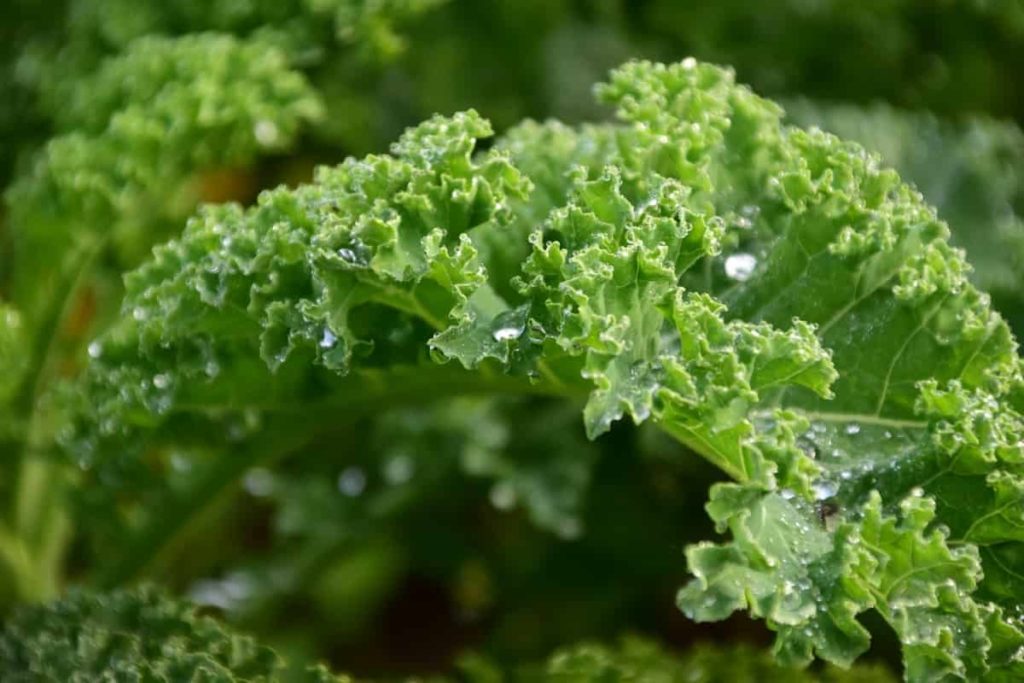
Radicchio
Radicchio is also a type of chicory, Cichorium intybus, also known as Italian chicory. The bitter taste of this vegetable makes it a salad lover’s favorite. Its striking deep garnet leaves add a unique color to salads, while its intense flavor is often used to counteract other sweet ingredients.
Growing it is similar to growing lettuce since both are daisies. Radicchio seeds can be planted in spring or summer for harvest in the fall. If you keep the plant indoors or in a protected balcony environment, you can also plant it in mid-fall for winter harvest. However, it would help to plant radicchio in late fall or winter in hot climates since it is a cool-weather crop.
Turnip greens
Turmeric is a root vegetable similar to beetroot. Its leaves, however, do not provide as much nutrition as turnips. It also contains manganese, folate, calcium, vitamin A, C, and K. Instead of spinach and kale, turnip greens are also used. The greens can be harvested 10-12 inches tall without damaging the roots. Allow the greens to fill in after harvest.
Endive and escarole
Among the members of the chicory family are endive and escarole. The legumes have the same botanical name—Cichorium endive. Endive’s curly and prickly texture is a crisp and slightly bitter flavor. Escarole has a more comprehensive, flat-leafed texture, is less bitter, and has a slightly nutty flavor than endive. For a quick summer harvest, start these bitter greens in containers. Although endive is tolerant of temperature fluctuations, it thrives best in moderately excellent conditions.
Watercress
The watercress belongs to the mustard family and has crisp, small leaves with a dark green color and a peppery taste. Watercress is a healthy addition to salads. In addition, it is an excellent green leafy vegetable to grow. To grow this super-healthy plant, keep it in the shade and water it regularly. Maintaining regular trims, good drainage, and an ideal potting mix will encourage new growth and help your watercress thrive in pots.
In case you miss this: 23 Vegetables to Plant in the Rainy Season in India
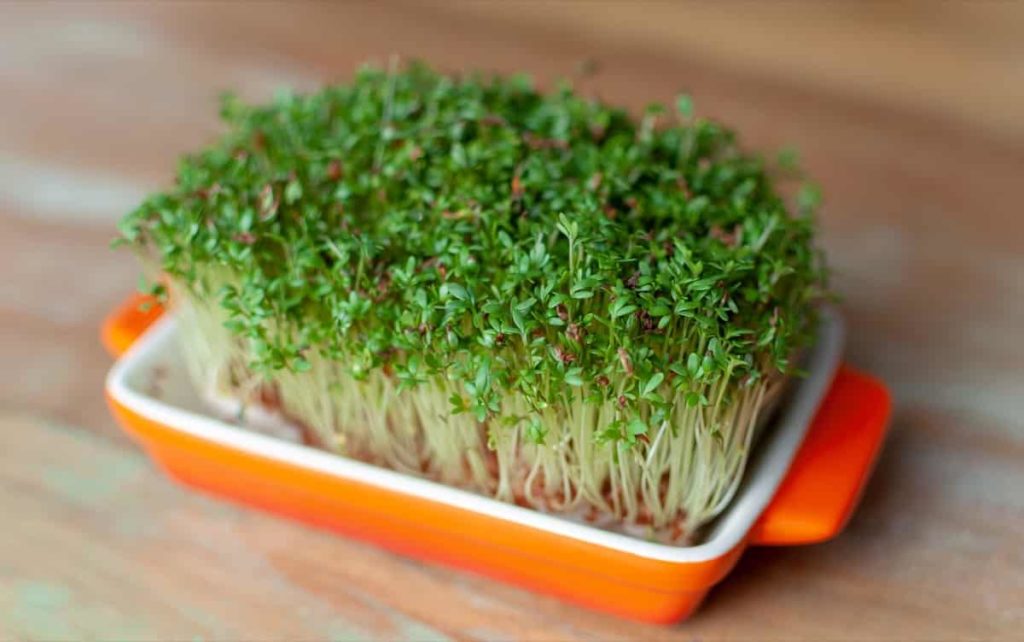
Beetroot leaves (Chukandar)
Leaves of beetroot plants and vegetables are called beetroot leaves. It contains nutrients such as vitamin B6, C, K, protein, fiber, magnesium, folate, etc. It boosts the immune system. It is also beneficial for heart problems and lowers blood cancer risks.
Dill leaves (Shepu)
Cooking dill leaves, also called ‘Shepu,’ is a standard method of consuming dill leaves in Indian households. It looks like soft, feathery leaves. Indian Dal is another way to consume dill leaves. The leaves of Dill are an excellent source of protein, carbohydrates, and fiber. They can help treat diseases like fever, colds, nerve pain, and infections in some cases. Dill also leaves aid digestion.
Coriander leaves
It is trendy in India to consume coriander leaves. Almost every dish, soup, and salad use them as a flavoring agent. As well as vitamins A, C, E, K, and B6, they are packed with nutrition. In addition to calcium, magnesium, copper, etc., they also contain dietary fiber. Diabetic patients should consume coriander leaves. Their antioxidant properties make them beneficial for treating eye diseases as well. In addition, they reduce cholesterol levels and cure a wide range of conditions in the nervous system.
Bok choy
A member of the cabbage family, bok choy or pak choi is a delicious leafy green. The stems and leaves of this plant are rich in folate, carotenoids, and calcium. Bok choy is an excellent addition to salad and makes a tasty coleslaw.
Collard greens
Collard greens are cruciferous vegetables related to kale and are a mainstay of southern cooking. It often serves as sophisticated addition to bland meals due to its crunchy texture and spicy taste. In partial sunlight, collard greens thrive in pots. You should, however, move it to a shaded spot during the hot afternoons if you are planting during summer.
Sorrel
Sorrel is a salad green that is easy to miss when discussing growing greens. Sorrel vanished from the culinary scene for hundreds of years after being a popular ingredient in European cuisine. However, this tart and tangy green are coming back in kitchens and gardens.
Container gardeners can quickly grow sorrel and other green leafy vegetables and herbs. Please place it in a pot at least eight or ten inches deep every year. The main advantage of growing sorrel in a pot is that it needs little water and maintains sunlight by moving the container accordingly to temperature and sunlight intensity.
Mache (Corn salad)
Maze, also known as corn salad, has a sweet and nutty flavor that complements other greens. Raw leaves are also delicious due to their delicate flavor and texture. A cool-season crop can be ready for harvest as early as 40 days after overgrows. If you want to grow, get a tray or window box that is wide enough, 12-18 inches across, and 6-10 inches deep. If the weather is warm, keep it in full sun but avoid afternoon sunlight.
In case you miss this: Organic Backyard Vegetable Gardening
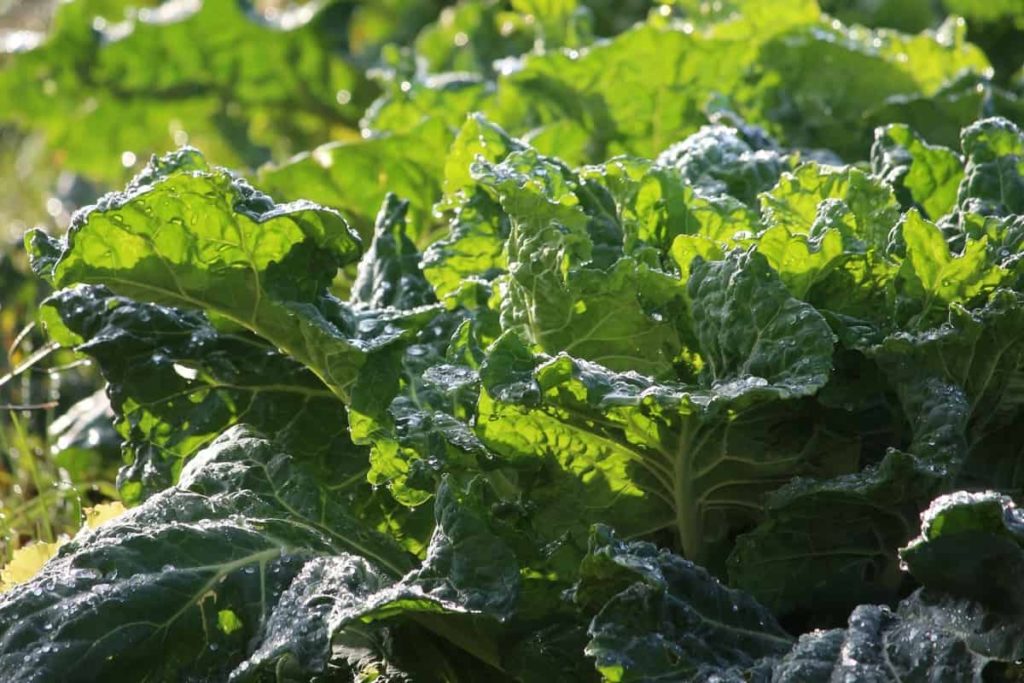
Tips for fast-growing leafy vegetables in pots
- You’ll notice that each place you stand or sit will have subtle differences in temperature, light, rainfall, humidity, and wind. Therefore, your plants need to be matched to these micro-climates. For example, grow a plant near a north-facing wall to avoid frost damage.
- You can also create your microclimate by clumping plants together for extra shade or growing vines on the balcony for a windbreak. If your plant is not thriving, don’t be afraid to try it somewhere else. It will guide your choice of container. Watering plants irregularly can damage some plants, but overwatering them can cause fungal problems.
- Glazed or plastic pots keep moisture in better than terracotta pots, and pots with saucers can be good, but too much moisture can cause fungal problems. Elevate containers if possible. If plants suffer from water stress, consider making or using a water-saving pot.
- The size and root system of plants determine their requirements. Choose containers with a minimum depth of 30 centimeters for leafy vegetables. Salad, for instance, can be grown in a shallow pot, while beans and beets require a larger container.
- You can find second-hand containers at garage sales, council clean-ups, or online share and sale sites. Consider using old baskets, kitchen pots, and buckets as containers. Make sure they have adequate drainage and are clean.
- Pot plants dry out faster than those in the ground, so it’s important to water regularly to avoid water stress, which can affect growth and cause some plants to bolt. If possible, water early in the morning or late at night.
Commonly asked questions about fast-growing leafy vegetables in pots
1. What is the best way to grow leafy vegetables in pots?
Pre-moistened, high-quality potting soil or one of your making soils is added to the container. Densely sow the seeds, with a 1 inch or 2 cm spacing between each one. Make sure the seeds are moist during germination. Use a pair of scissors to thin the green plants when they are a few inches tall.
2. How do you care for leafy vegetables in pots?
Leafy plants indeed tolerate shade better than plants grown for their fruit or roots, but at least six hours of sunshine daily ensures a quality harvest. Leafy greens are not to be planted in heavy clay soils or sand. A soil pH of 5.8 to 6.8 is recommended.
3. What is the best fertilizer for leafy vegetables grown in pots?
Foliar vegetables require a nitrogen-rich or balanced fertilizer, such as a 20-20-20 blend, while fruiting and root vegetables require a phosphorus-rich fertilizer.
4. What are the easiest leafy vegetables to grow in pots?
You can grow salad greens in containers or the garden, like lettuce, arugula, and mizuna. The cut and come again method, which involves harvesting just a few leaves from each plant, will extend your harvest for several weeks. Planting in succession will give you a much longer growing season.
5. What is the recommended depth of soil for potted leafy vegetables?
The soil must be deep, well-drained, and well prepared for collards. Collard plants have roots that can reach as deep as two feet. Therefore, it is recommended that you dig the soil at least 10 inches deep. As a result, the soil will loosen, allowing the feeder roots to grow faster.
6. How many days will it take to grow leafy vegetables in pots?
Growing green leafy vegetables is the most rewarding of all vegetable gardening experiences as they grow fast from seed to harvest, taking as few as 30 days at times.
7. How do you grow leafy vegetables in pots at home?
Plant all greens in full sun. A consistently moist soil, but not soggy, produces the best greens. Spinach, kale, and mustard should be sown six weeks before the last frost in spring lettuce three weeks later. Put Malabar spinach plants in the ground after the threat of frost has passed.
8. Can leafy greens be planted together in pots?
Depending on the mature size of each variety or the size you plan to harvest, this will vary. Plant young greens close together to shade one another from excessive heat and sun. Young greens because they are sweeter and more tender.
- Gardening Techniques in Planting Vegetables
- Where to Place Indoor Plants in Your Home
- How to Grow Tomatoes Organically at Home: A Comprehensive Guide
- Organic Gardening on a Budget: Low-Cost Methods and Materials
- Gongura Seed Germination and Planting Methods
- Cabbage Seed Germination and Selection
- Broccoli Seed Germination and Selection
- Asparagus Seed Germination and Variety Selection
- Seasonal Flower Gardening: Best Practices for Spring, Summer, Fall, and Winter
- How to Grow Hibiscus from Flower
- Plantation Ideas for Home Decoration: A Beginners Guide
- Flower Garden Designs and Layouts for Beginners
- Planting and Spacing Techniques in Papaya: A Beginner’s Guide
- Growing Gold: Essential Techniques for Planting Pineapples
- How to Make Kalanchoe Plant Bushy: Home Remedies and Solutions
- 11 Reasons Why Your Gardenia is Not Blooming: Home Remedies and Solutions
- Eco Elegance: The Guide to Designing a Drought-Tolerant Landscape
- Gardening on a Slope: Strategies for Hillside Landscaping
- Nourish and Flourish: Top Organic Mulches for Thriving House Plants
- Everything You Want to Know about Indian Mogra Flower: Discover Uses and Growing
- Green Thumb Success: Expert Tips for Cultivating Greenhouse Pumpkins All Year Round
- Maximize Growth & Flavor: The Ultimate Guide to Companion Planting in Herb Gardens
- How to Control Rhododendron Problems Naturally: Home Remedies and Organic Ways to Fix Them
- Natural Magic: The Remarkable Benefits of Cinnamon for Plants
- Best Steps to Revive Dying Tulip with Natural and Organic Treatment
- 10 Reasons Why Your Angel Trumpet is Not Blooming: Remedies and Treatment
- How to Fix Periwinkle Leaf and Flower-Related Problems: Natural Remedies and Solutions
- How to Fix Zinnias Leaf and Flower Problems: Discover Natural and Home Remedies
- Organic Steps to Induce Lemon Tree Flowers: A Comprehensive Guide
- Bloom Booster: Crafting the Perfect Homemade Bougainvillea Fertilizer
- Optimizing Growth: A Guide to Applying NPK Fertilizer for Potted Plants
- 10 Best Homemade Fertilizers for Rubber Plant: DIY Recipes and Application Method
- How to Boost Female Pumpkin Flowers: Effective Steps for More Flowers and High Yields
- Transform Your Indoor Garden: Top Benefits of Pink Salt for Houseplants
- 10 Best Homemade Fertilizers for Peacock Plants (Calathea): Easy DIY Guide
- Unlock Blooms: 9 Reasons Why Your Potted Chrysanthemum is Not Blooming